 |
|
|
 |
|
|
|
How about private showcase rooms?
The nice thing about our work? It entails a lot of one-on-one interaction and consultation with the client. As a result, we get to know each other well. Nearly without exception, the client will then be more than happy to make his room available for a brief demonstration to a prospective new customer - if the mutual schedules can be synchronized and he's been given enough advance warning. We have Level-3 and Level-2 rooms across the country that a new client, just like you did, could 'audition' without too much travel, often directly within his own state.
Introduce us now to the other principals of Rives Audio that make up your team.
|
|
 |
|
|
 |
|
|
 |
|
|
| On the acoustical side, the engineering staff consists of myself and Chris Huston who was the senior designer on Jacob's room. Chris has 25 years of experience engineering professional and private listening room. Unlike most professional engineers from the recording industry, he fully understands the difference, between designing a recording studio and spec'ing out a HighEnd listening room. Chris was the recording engineer for The Who, Patti LaBelle, Van Morrison and Led Zeppelin. He did all of the War albums. Compare his recordings against others by the same artists. There's almost no comparison. His are head and shoulders above the others. |
|
 |
|
|
My VP of engineering on the hardware side is Larry Droppa who owns the ATI group which manufactures professional mixing consoles. Chris Huston had designed The Soundkitchen in Nashville, Tennessee, a large-scale recording facility which sports the biggest API mixing console ever made - an 84-channel, 17foot long, $500,000 beast (API is a subsidiary of ATI).
|
|
|
 |
|
 |
 |
|
|
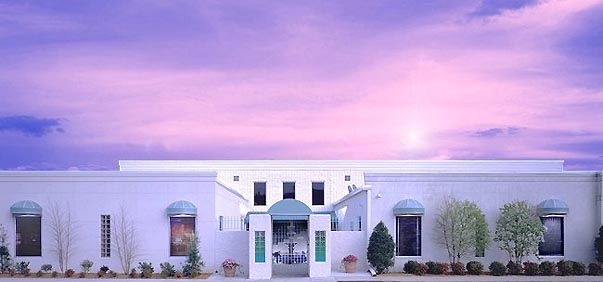 |
|
|
|
|
|
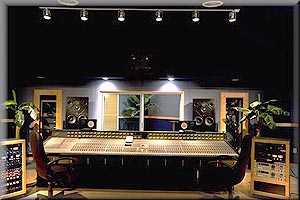 |
|
Paul Wolff [third image down at AES 2003] was the senior engineer for our PARC Parametric Adaptive Room Compensation hardware which you covered in your HE2003 report. He was in Nashville when they installed said console. He remarked on how the room Chris had designed didn't sound right. They called in Chris who pointed out that they had changed the control console on him. To which the engineers shot back how that had nothing to do with the acoustics he'd designed. To which Chris countered that yes, it did: The listening position was forward by 16 inches over the old console around which he had spec'd the space. If they moved it back to where it ought to be, everything would be fine. Chris did this in no time - he walked in, looked around and pointed a finger. No measurements whatsoever, just a New York nanosecond.
Paul Wolff is highly skeptical - but when he saw that (Chris turned out to be spot-on) he became a believer on the spot. Paul confided to me that they would have eventually figured it out themselves - after weeks of sweating it. [Chuckles while recounting this story.]
When we design Level-3 rooms, we all collaborate - and we're recruiting an additional person right now who will be involved in that process. I strongly believe that two heads think better than one. Hence we review each other's designs no matter who's the lead engineer on any given project. I'm the one who does most of the math and has written most of our software programs to validate rooms by computer simulation. Chris has never made a mistake. I've validated all of his rooms. They're always dead accurate. And he does it from experience, quasi intuitively, with far less math than I. His is a different approach. |
|
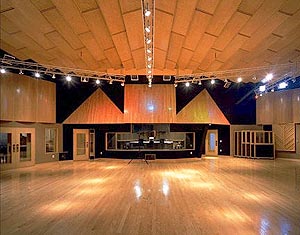 |
|
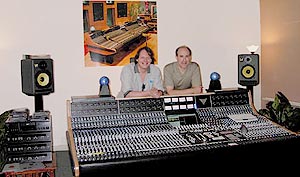 |
|
Since we work on all projects together, I'm assured that, coming from our two respective directions, we'll nail even challenging situations time and again. And then there's Larry's brother Ted Droppa, the software engineer for our PARC - these are our key players at Rives Audio.
Which brings us to the PARC, the analog-domain EQ I saw used to such good effect in many rooms at the San Francisco show: Avantgarde/BAT, Shunyata/JMlab, Talon Audio/Sim Audio.
|
|
 |
|
 |
|
|
|
|
To begin that discussion, I need to reiterate that our company is not about designing hardware. We are an acoustical design & engineering firm, period. However, there exists a universal problem for which there often is no cost-effective practical solution: Room modes. Every room has them and there's nothing you can do about it. Ideally, these modes are nicely spaced to give a relatively even bass response. But when you're dealing with an existing room that's got a severe bass bump, you have to address it or nothing else will really matter. |
|
|
|
 |
|
|
|
Now, you could use the old tube trap method. How much fiberglass can we pack into yonder corner? [Giggles.] That's the problem. To be effective, you need enough fiberglass to hit the quarter wavelength of the frequency you're trying to attenuate. For 60Hz, you'd need about 4 feet of fiberglass density which just shrunk your floor plan by 48 inches. Say the room mode was caused by the floor-to-ceiling distance. Packing the corners alone won't address the problem. That standing wave propagates all across the room, with the carpet utterly ineffective at that frequency. So stuffing the corner only accounts for 5% of the surface area you'd have to tune. You almost can't tell the difference - except that your high frequencies will most certainly be dulled due to massive absorption, especially if you had large-surface planars like Jacob. So tube traps aren't the answer. What else is there?
Other types of absorption panels usually aren't operative below 130Hz where the most bothersome room modes occur. True, you could design a custom Helmholtz resonator; but it will be big and heavy. You may not have the appropriate cavity to put it - and placement specificity is a major issue to be effective. So in an existing room, that's usually not a terribly practical solution either. Enter the PARC.
|
|
|
|
It allows for three bands of independent left-right channel attenuation below 350Hz, to notch-filter the most offensive peaks by center frequency, Q-factor (width of the band) and amount of cut - up to 18dB, in 0.2 dB steps from 0-10dB and full 1dB steps from 10-18dB. The PARC is an anolog-in/analog-out no-gain device with both single-ended and balanced paths. Those can be switched to allow coming in by RCA and going out via XLR - or the reverse. A front-panel bypass retains but one lone op-amp in the circuit to enable format conversion between the RCA/XLR i/o ports. When you power the unit down, it becomes a straight-wire through-put but defeats the mixing function of the i/o formats. You now have to go in and out either balanced or single-ended. That's why we also offer the front-panel bypass. It's a completely analogue device except for the control circuitry and memory functions which are on their own discrete boards out of the signal path. We designed the PARC in this way so as to not introduce digital conversion post-phono (I love vinyl) which always thins out the sound and introduces grain. |
|
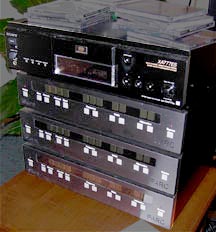 |
|
|
During AES 2003, 3 PARCs
were used during a
multi-channel music demonstration
|
|
|
If you had a bona fide High-End transport/DAC combination, why would you want to insert an additional stage of D/A conversion that, nearly by definition, would be inferior to what you already owned? So the PARC is a simple band-pass for the mid and high frequencies to keep those vital regions transparent while performing skillful surgery in the lumpy bass.
So the PARC comes with its own microphone then?
No. There are two ways to calibrate it. One is to use the enclosed Rives Audio test CD with two sets of 1/3-octave test tones from 20Hz - 20kHz to plot out your in-room frequency response. One set is calibrated/compensated to be used with the Radio Shack SPL meter. The other way is to have one of our dealers come and calibrate it for you with a precision microphone. Oddly enough, the end results will be identical. I'm the first to admit that this sounds disingenuous. We all know the difference between 1/3-octave and high-resolution measurements. It's huge. However, at the end of the day when you set the figures for the PARC, the results between either approach are identical time and again; you're setting the same numbers. So while theory predicts that the Radio Shack method is inferior, it turns out to not matter - 'high-end' and 'low end' calibration net the same results. In fact, a number of reviewers have duplicated this test and come to the same conclusion.
We're currently finishing up the requisite software with the Professor of Mathematics from the University of Iowa, John Ledaev, who did the first math for Theta's D/A converter. He's writing the optimization algorithms for the PARC so that a dealer can use our test kit with his microphone and our psychological response filter to integrate the results as the human ear/brain mechanism would. Like the initial algorithms for our BARE software, this response filter was developed by Doug Plumb of Acoustisoft who originally wrote ETF. Ledaev's new software will send the optimum calibration parameters to the PARC and store them in memory so that a dealer can set up a PARC in literally 5 minutes.
|
|
 |
|
 |
|
|
|
|
|
 |
 |
|
|
 |
|
|
|
|
|
|
|
|
|
|
|
|
|
|
|
|
|
|
|
|
|
|
|